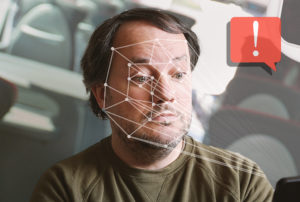Driver Monitoring Systems What are they and what are they for?
Driver Monitoring Systems: What are they and what are they for?
 Los Sistemas de Monitorización del Conductor (Driver Status Monitoring – DSM por sus siglas en inglés) representan una parte fundamental dentro de las soluciones de seguridad para autobuses y transporte de pasajeros. Basado en un sistema que combina inteligencia artificial con cámaras de infrarrojos, y enfocada al rostro del conductor de forma lateral o frontal, el sistema asegura que tus profesionales al volante no pierdan la concentración a la hora de la conducción.
Los Sistemas de Monitorización del Conductor (Driver Status Monitoring – DSM por sus siglas en inglés) representan una parte fundamental dentro de las soluciones de seguridad para autobuses y transporte de pasajeros. Basado en un sistema que combina inteligencia artificial con cámaras de infrarrojos, y enfocada al rostro del conductor de forma lateral o frontal, el sistema asegura que tus profesionales al volante no pierdan la concentración a la hora de la conducción.
When the system recognizes driver absent-mindedness or signs of fatigue, it emits an audible and visual signal, which alerts the driver and the system that it has detected a sign of distraction or fatigue.
What do Driver Monitoring Systems detect?
There are different factors that can distract the driver while driving, let's see the most important:
Phone usage detection
The use of the telephone is something that is observed frequently and that distracts the driver. Sending and receiving voice notes, writing and reading text messages, viewing videos or images, all represent elements that can divert the attention of the driver from the road and that can cause an accident.
Smoke
Smoking while driving is a risk factor. Smoking behind the wheel not only causes distractions, but also disables one of the hands, limits vision due to smoke, and decreases the driver's level of attention. According to data from the DGT “ Lighting a cigarette takes 4.1 seconds, which means that, traveling at 100 km/h, you travel 113 meters without full attention on the road . ”
Distractions
The French insurer AXA assures that, if we are able to alert the driver 2 seconds before a collision occurs, between 80% and 90% of accidents could be avoided . The DSM system detects driver distraction when looking away from the road, even with glasses on.
Drowsiness
Driver fatigue represents one of the most dangerous elements, since it does not depend on voluntary acts or correctable attitudes. The system alerts the driver through acoustic and visual signals when it detects signs of fatigue. Taking a break after long periods of driving is key to preventing accidents. According to the Ministry of Transport, Mobility and Urban Agenda “ after a driving period of four and a half hours, the driver must take an uninterrupted break of at least 45 minutes .”
Conclusion
DSM Driver Monitoring Systems comply with all regulatory standards. Its learning capacity benefits daily from the information of thousands of vehicles, which feed its databases in real time. These systems make drivers' jobs easier, add value to your fleet, help prevent accidents and, most importantly, reduce risk for your drivers and passengers.

